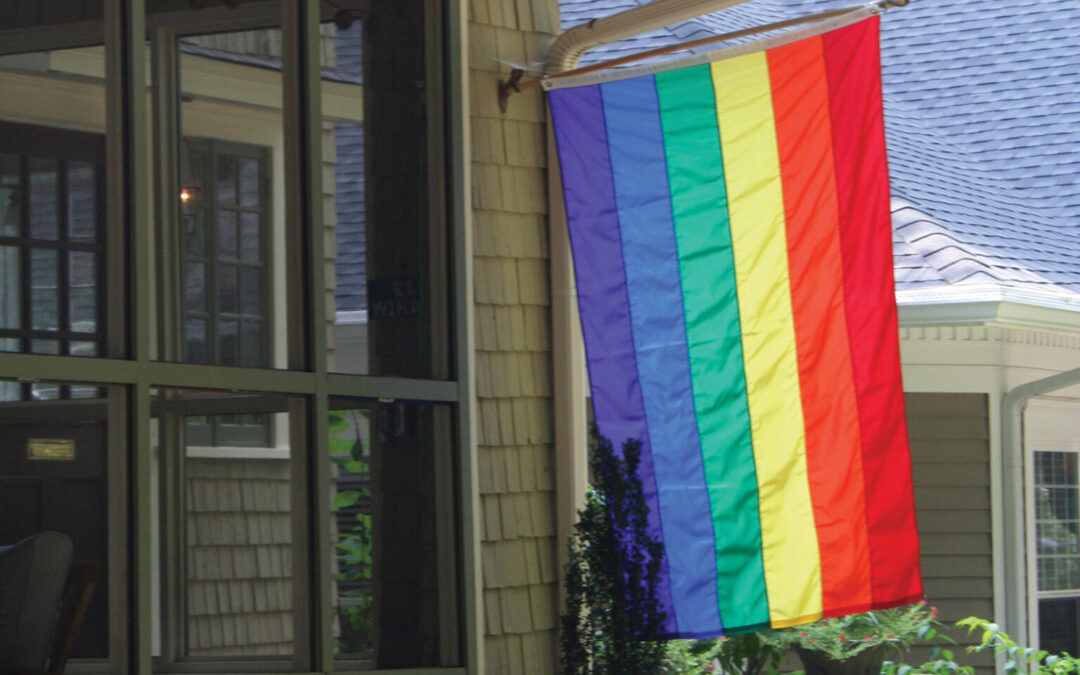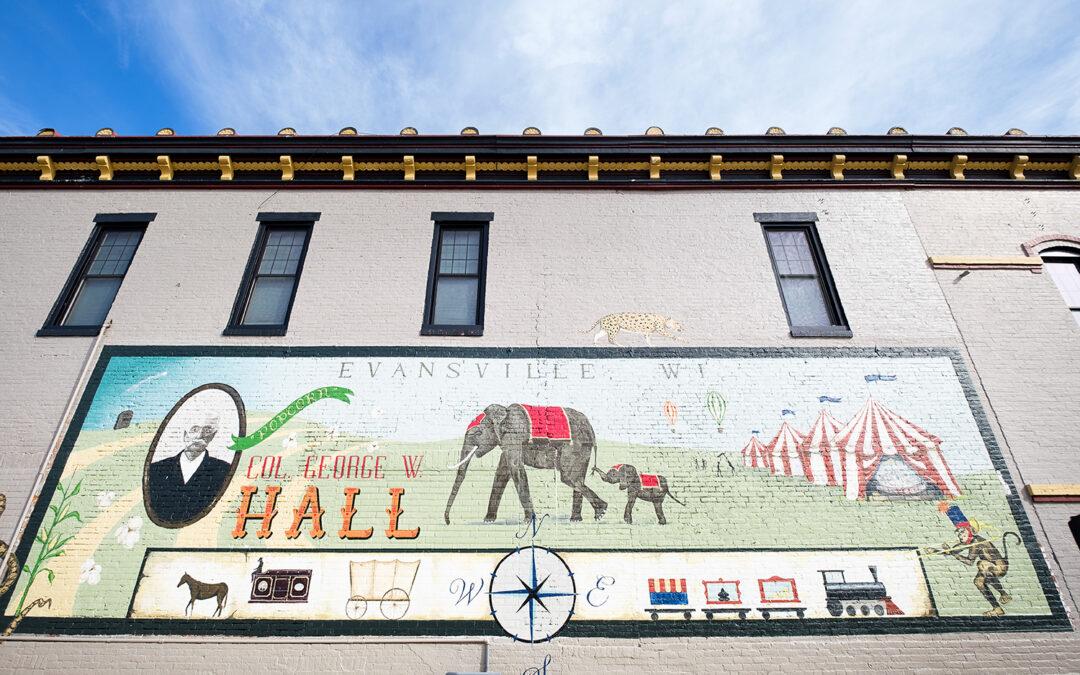In the early days of the HIV/AIDS epidemic in the U.S., people who contracted HIV faced stark discrimination in health care. Those who had the fewest resources were the most vulnerable to a lack of AIDS-related care, particularly in what was then a terminal illness. In 1990, Joseph’s House was founded in Washington, DC to offer people with AIDS a place to get end-of-life care and experience death with dignity.
Meanwhile in Madison, Wisconsin, Ann Catlett was a palliative care physician who witnessed firsthand the limits of how our healthcare system treats and cares for those with terminal illnesses and who are also experiencing homelessness. She remembers an example early in her practice that opened her eyes to what patients faced.
“I had a patient who had a new diagnosis of lung cancer that was very progressed,” Catlett explained. “We didn’t have a place to discharge him to. Hospitals try to discharge patients with the best plans in place, but us saying ‘Go see another doctor about your cancer’ wasn’t enough. I was newly aware at the start of my career as a physician that there are sick people who don’t have shelter or care after their stay ended at a hospital. It was surprising to me at the time.”
As Ann continued to ask questions about the gap in care and shelter for homeless patients, she learned about Joseph’s House in DC, and she wanted to learn more about how the HIV/AIDS homeless hospice worked. In 2008, she signed up to “volunteer,” but it was almost like an immersive internship where she got to experience how the home wove threads of its faith-based mission, hands-on care, and justice work together.
“I learned that they started the house for people—who would otherwise be living on the street—to live their final months of life with care and support,” remembered Catlett. “But as treatment for HIV/AIDS has gotten better, Joseph’s House transitioned into accepting people with other kinds of terminal illnesses. They had eight beds and were having to turn people away. I went there to volunteer, but mostly it was to learn and be inspired by their work. I came back to Madison and wondered how we could create a place like this here.”
Solace Friends is that place.
When the cause of death is homelessness
It was on a marble bench in front of the Wisconsin State Capitol building where Dwayne Warren died on June 16, 2009. At age 38, Warren died of sepsis, a treatable blood infection. The stark and public death of someone who was homeless, who died at the steps of the hub of elected officials’ policymaking in Wisconsin, was an enormous wake-up call for those who advocate for equitable housing and systemic change.
Since then, local advocates, including Just Dane Executive Director Linda Ketcham, memorialize those who lived and died on Madison’s streets each year in The Longest Night memorial on the Capitol square. The winter solstice gathering includes contemplative remarks, a reading of the names, and a horse-drawn hearse that makes a slow loop around the square. The mourners who follow then meet at First United Methodist Church for a meal and formal service of peace and remembrance.
“It was Dwayne Warren whose death spurred us to put The Longest Night together,” said Ketcham about the local observance that’s a part of a national effort. “Sepsis is something that could easily be treatable with an antibiotic. This made us really think about what it means to ‘die of a natural cause.’ I don’t think it’s a natural cause for a man to die of a blood infection that an antibiotic can take care of. We should question what we are willing to accept as a natural cause.”
The list of names read during The Longest Night ceremony in 2021 was strikingly long. Ketcham said in most years, the list is around a dozen names. In 2021, they read 62 names. While not all of the people who were named died in the 2021 calendar year, the list included the new reports of deaths submitted by area agencies that serve those who are homeless, and each name represents someone who fell into the complex gap of housing, healthcare, and hospice needs in the Dane County community.
“As we go through the comprehensive list of a couple hundred people we’ve remembered in the past 14 years, sometimes I can figure out the cause of death, which people died of cancer,” said Ketcham. “But what I see, and what I think Solace Friends sees, is a lack of data. We don’t do a good job of tracking the cause of death for people who are unhoused. Where I can find a cause of death, it’s most common that a person was murdered or was the victim of a hit-and-run driver. But unless a death crosses the line of a crime, it doesn’t get reported. The City of Madison and Dane County have a road map to prevent violence, but we have to think about how we define violence. There are national statistics on the likelihood of the unhoused being a victim of a crime. We should really include homelessness itself as a form of violence.”
How we’re talking about death and the barriers of homelessness
Meagan Minster is a medical social worker who worked for a Madison-area hospice agency. She met Ann Catlett before Solace Friends was formed. Ann conducted a needs assessment and interviewed people in the community like Meagan who worked in health care, hospice, or homeless services.
That initial conversation sparked more interest in Meagan. She volunteered, served on the programming committee and ultimately as the board secretary of Solace Friends nonprofit before she and her wife moved to Waukesha County to be closer to family.
Meagan sees a broader conversation about death and dying happening in the United States. But while some states are making progress on death with dignity laws, doctor-assisted death options, alternative or green burials, and family leave to care for terminally ill relatives, there are still big gaps in the ways we care for the dying, particularly for those who are the most vulnerable in their experience with social injustices.
“One of the main things we focused on is how people in our community who are the most marginalized are also historically oppressed in the ways that don’t allow them access to the health care system and the ability to die a dignified death, where they can get the respect and care they deserve,” said Minster.
“A part of a natural death is that people become weaker and need support. Traditionally hospice includes the day-to-day tasks provided by loved ones who can care for someone when they cannot walk, get to the bathroom, feed themselves, or take meds independently. In hospice, that care is provided wherever people call home, usually a private home, an apartment, or an assisted living facility that has the built-in, hands-on care.
“The biggest barrier to death with dignity is when those who are ill don’t have family who can provide the day-to-day help, like people who can prepare them a meal if they cannot get to a meal site, who don’t have resources to meet their needs like a safe place to store medication, or have a place to rest and have meals delivered to them.”
It’s the day-to-day help that the leaders of Solace Friends seek to be able to provide. Nationally there are around 40 nonprofit, community-supported homes that are a part of the Omega Home Network which teaches the hospice model of the Social Model Hospice Home. There are more homes that exist outside of the Omega Home Network with a similar model as well.
“The social hospice model is based on providing a physical space where people can get hospice care and the social support of caregiving,” explains Minster. “This can be everything from meals, a cozy bed, medication management—though we’d work with local hospice agencies for prescriptions and medical care. It’s all the non-medical things that are crucial to having a comfortable and dignified end-of-life experience. Based on other models around the country, we learned about ideas and the structures that would serve our community best.
We established Solace Friends as a nonprofit and started fundraising. Now we are looking for a physical space to provide this care.”
Making the connection between care and justice
Just Dane saw unmet housing needs in the community for families with someone who is recuperating from an illness or surgery. Linda Ketcham was among the leaders who worked with local faith groups to open Healing House in the summer of 2019. Since opening, Healing House guests have included an unaccompanied minor with a high-risk pregnancy, and infants and parents recuperating from surgery or broken bones.
The work leading up to opening the shelter, and the lessons learned since 2019, revealed more systemic gaps in how society treats those experiencing homelessness.
“We learned that, because of the way we have criminalized poverty, many adults who are homeless have also been involved with the justice system,” said Ketcham. “We’ve found that people have had to pay so much in penalties that they have no place to sleep. The racial disparities in the justice system cut across issues of housing and homelessness. We can focus on advocating for shelter or transitional housing, but that’s not justice. It’s a bandaid on larger problems of substandard wages, the unwillingness of elected officials—especially at the state level—to increase the minimum wage, and the lack of affordable housing stock.”
For elderly people who need medical care or respite, there are other policy barriers. Nursing homes can refuse to care for people who have had past convictions related to violent crime or drug abuse, even if the conviction is decades old. “Truth in sentencing” conviction policies kept people behind bars for lengthy sentences. When the COVID crisis hit, some correctional facilities released elderly inmates who had health problems. Those who spent so long in jail they could not qualify for social security or medicare are left without any safety net of money for housing or medical care, further complicating pending end-of-life options.
“Part of what I like about Solace Friends is it’s a model that meets people where they are and welcomes them where they are without judgment or pretense,” said Ketcham. “I think we need that trauma-informed model of care that we don’t always see in hospice or hospital programs. It’s important if someone has been unhoused and is terminally ill that they feel comfortable to go into a hospice that is a safe and welcoming place, that’s accessible for friends to visit, people build relationships and Solace is doing the relationship building. There is a level of trust there as they take the time to get to know people where they are at instead of ‘You have to come to us.’”
Right now Solace Friends needs a house to call home
Minster and Catlett describe the vision for Solace Friends’ house as a single-family home with three-to-five bedrooms where people can die a safe death. The board is prepared to pull in local resources to renovate a building as needed.
“We’d like to find a building that’s centrally located along a bus line so that visitors or volunteers could get there, with bedrooms on the first floor and space for gurneys and wheelchairs so it’s accessible,” said Catlett. “But we’d also like the house to have a big dining room table, and a big front porch or a garden so guests can enjoy living in a home together with other people. Some have suggested that we start by renting apartments, but a shared living space with an outdoor area where people can sit and enjoy nature and each other is ideal.”
It would also be licensed as an adult family home, a designation that is important for funding and the way group homes are regulated. Adult family homes provide the non-medical services that typically family caregivers provide. Everything from changing linens and clothes, keeping people warm and dry, giving medications, preparing meals, and providing company. Volunteers and future staff would be following the policies and procedures licensed facilities require to ensure guests have the safe and supportive stay that supports the end of life experience they wish to have.
Solace Friends fundraising committee co-chair Joan Karan is confident that the home would be sustainably funded. An attorney is helping the board identify what services would be covered by Medicaid, and some guests will have access to Social Security funds. But fundraising for the start-up efforts and pledges of future support have been very strong.
“We’ve received funds from the Evjue Foundation, UW Health, Madison Community Foundation, Madison Gas and Electric, the Katz-Krantz Family Philanthropies, and Roots and Wings,” said Karan. “We’ve received tremendous support from individual donors and faith communities. We raised $50,000 from individuals last year, and we aren’t even open yet. We know we will get lots of future support as well, but it all depends on finding the house to make Solace Friends a home.”


























0 Comments